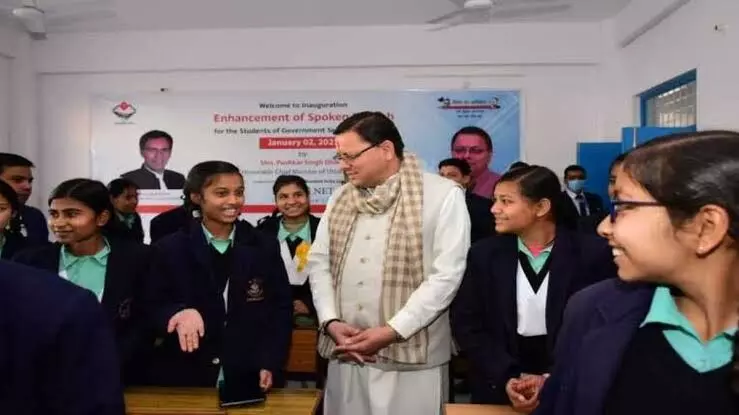Election Takes Over Education: Uttarakhand’s Schools Pay the Price

Uttarakhand, a picturesque Himalayan state, is adding to its growing educational emergency. While elections dominate the political and administrative scene, governance priorities have shifted dangerously away from classrooms. Recent reports show that 1,149 primary schools lack even one teacher, and nearly 59% of the state’s 17,787 schools function without a principal or headmaster. In over 3,500 schools, a single teacher is left to handle all grades, and thousands of classrooms have just one or even zero students. These are not statistics—they are a stark reminder that if everything becomes subordinate to elections and poll duty, education gets sidelined.
It gets worse. Uttarakhand’s Migration Prevention Commission found that 263 schools have no teachers at all, particularly in hill districts, and 180 schools have only one teacher for one student . Notably, low-quality education is the second leading cause of outmigration, after unemployment .
Families are leaving ancestral villages not for better livelihoods alone, but because their children are promised rudimentary or no schooling. Meanwhile, 650 trained teachers from the 2020–21 DIET batch remain unemployed, even as schools struggle to fill vacancies .
At the same time, with election season in gear, teachers are being diverted en masse for poll duty, depriving already beleaguered classrooms of what little instruction they received. Schools open only during elections, and are abandoned once votes are counted .How is this not prioritizing election logistics over a child’s right to education?
Compare Uttarakhand to its Himalayan neighbour, Himachal Pradesh, which boasts an 82.8% literacy rate, a robust teacher-residence program that encourages postings in remote areas, and strong infrastructure investment . HP has over 10,000 primary and 1,300 high schools, anchored by quality staffing and emergency support systems. Here in Uttarakhand, by contrast, governance blindspots lead to ghost schools, empty classrooms, and communities bereft of educational services.
If polling is more important than school, what are we trying to say to the next generation? Is the democratic process more sacred than the infrastructure that enables democracy to function—education? The question we must confront is whether an entire generation’s prospects should be sacrificed at the altar of electoral procedure.
Why do trained teachers remain idle while schools go unstaffed? Why are administrative duties prioritized over learning? What is the justification for allocating scarce human resources—teachers—for election work, when many schools already have zero teaching staff? With data showing 58% of schools without headmasters ,why aren’t principals appointed to provide essential leadership? Why is the state failing to deliver on basic educational rights despite policy promises and funds allocated?
And crucially, what part of “Sabse Pehle Shiksha” rings hollow when ballots are given precedence over books? When the administration’s own slogan is “Pehle Matdan, Phir Aur Kaam,” are we willing to sacrifice the future—children’s futures—for a day’s voting?
If every resource gets diverted to polling, what remains protected in the democratic process? Public infrastructure, civic amenities, schooling—all seem expendable. At what point do we say that elections are important, yes, but not at the expense of schooling?
Let Uttarakhand’s administration ask itself: does a polling booth without education sanctify democracy, or does it empty classrooms of direction and dignity? If governance is truly for the people, education must come first. Otherwise, we’ve already lost the future in service of the present.
What does the state value more: the fleeting moments of election ritual or the lifelong arc of children’s learning? A civil society that values its schools over the ballot, and governance that honours both equally, is the democracy we must demand.
